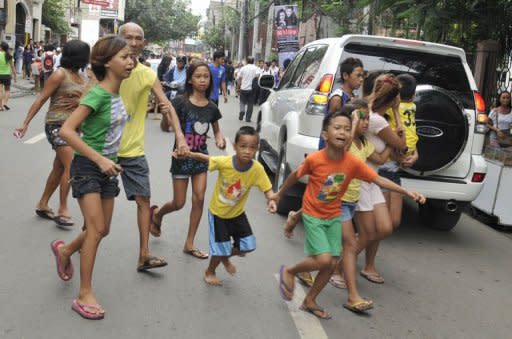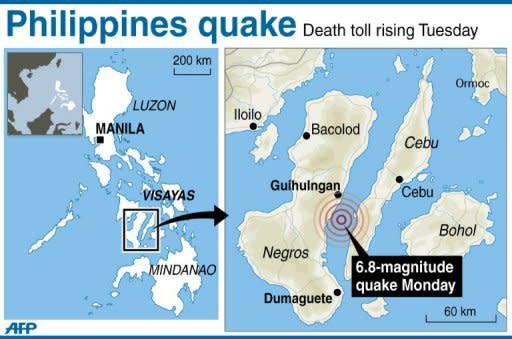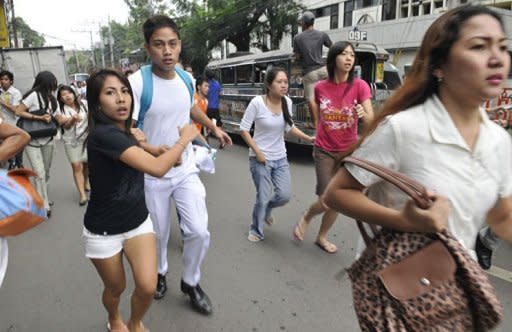Philippine rescuers search for quake survivors
Rescuers in the Philippines dug through rubble with their bare hands on Tuesday in a frantic search for survivors, a day after a powerful earthquake killed dozens of people. The 6.7-magnitude quake hit a narrow strait between the heavily populated islands of Negros and Cebu around lunchtime Monday, triggering devastating landslides, tearing down homes and destroying roads vital to relief efforts. At least 48 people died and another 92 were missing, regional military commander Colonel Francisco Patrimonio said on Tuesday afternoon, and local government leaders warned the death toll was likely to rise. "We are praying and hoping that we will get some survivors, but it's likely that many of those missing in the landslides have died already," Roel Degamo, the governor of Negros Oriental, the worst-hit province, told AFP. Dozens of people were confirmed dead in Guihulngan, a coastal city flanked by mountains with a population of 100,000, where the public market, court house and many private homes were destroyed or badly damaged. After the tremor brought down bridges and left deep fissures on asphalt roads, the area was only accessible by motorbike, foot or helicopter, and overwhelmed local police had few resources to search for survivors. "We are using our hands and shovels to search in the rubble," Guihulngan police chief Senior Inspector Alvin Futalan told AFP. An AFP photographer saw about 50 rescuers dig up the body of a young woman after the mountainside collapsed on a mountain hamlet. The rescuers later said they heard cries for help underneath the rubble, triggering frenzied digging by men using only shovels. However, they stopped later when they failed to find anyone else. President Benigno Aquino ordered air force helicopters to Guihulngan, as well as the navy and coast guard to transport relief supplies by sea, according to his spokeswoman Abigail Valte. An AFP correspondent who reached Guihulngan by motorcycle said survivors were huddled in makeshift tents and refused to go indoors due to a series of terrifying aftershocks. State seismologists said more than 700 aftershocks, some nearly as strong as the initial quake, had battered Negros, and warned residents to expect many more over the next few weeks. Guihulngan mayor Ernesto Reyes said patients at the city's main hospital were rushed out of the building after a strong aftershock rattled the walls and split open a tennis court on Tuesday. He described a sense of despair and fear throughout the city. "Our water system is broken, there is not enough food, people are in panic and there is no electricity," he told AFP. Aside from the carnage in Guihulngan, regional commander Patrimonio said rescue efforts were focused on the nearby town of La Libertad where up to 40 people were feared buried in rubble. In Manila, the national government's disaster office said its death toll was 15, with 71 missing, but acknowledged it had not yet been able to verify reports from local authorities as to the extent of the damage. Cebu, the Philippines' second biggest city with 2.3 million residents and a popular tourist destination, was 50 kilometres from the epicentre and shook violently during the initial tremor but no deaths were reported there. The Philippines sits on the Pacific "Ring of Fire" -- a belt around the Pacific Ocean where friction between shifting tectonic plates causes frequent earthquakes and volcanic activity.




